The Queen Elizabeth Class aircraft carriers are the largest surface warships ever constructed for the Royal Navy and represent a significant increase in capability.
The vessels will be utilised by all three branches of the UK Armed Forces and will provide eight acres of sovereign territory. Both ships will be versatile enough to be used for operations ranging from high intensity conflict to providing humanitarian aid and disaster relief. The class have increased survivability as a result of the separation and distribution of power generation machinery throughout each ship.
Instead of a traditional single island, the has two smaller islands. The forward island is for ship control functions and the aft (FLYCO) island is for flying control.
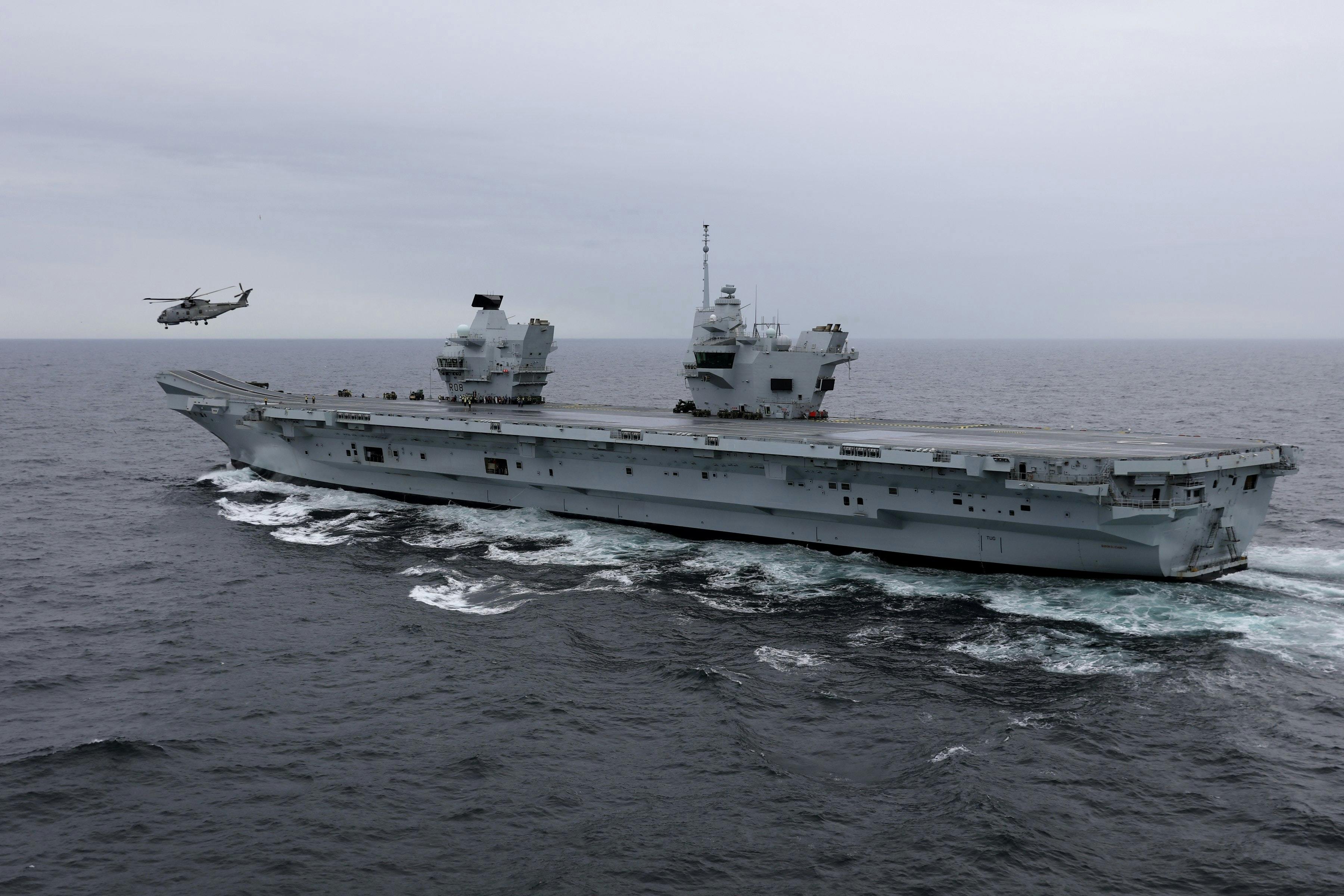 The reason for two bridges is, simply put, due to the gas turbine exhausts. The design would have either had two small islands or one large, long island. The two smaller islands were chosen. The location and alignment of the islands are based around the 2.4 metre diameter gas turbine exhausts which were pre-fitted in the island and below in the ship superstructure.
The reason for two bridges is, simply put, due to the gas turbine exhausts. The design would have either had two small islands or one large, long island. The two smaller islands were chosen. The location and alignment of the islands are based around the 2.4 metre diameter gas turbine exhausts which were pre-fitted in the island and below in the ship superstructure.
Advantages of the two island configuration are primarily increased flight deck area and reduced air turbulence. Flight control in the aft island is positioned perfectly for aircraft approaches and deck landings.
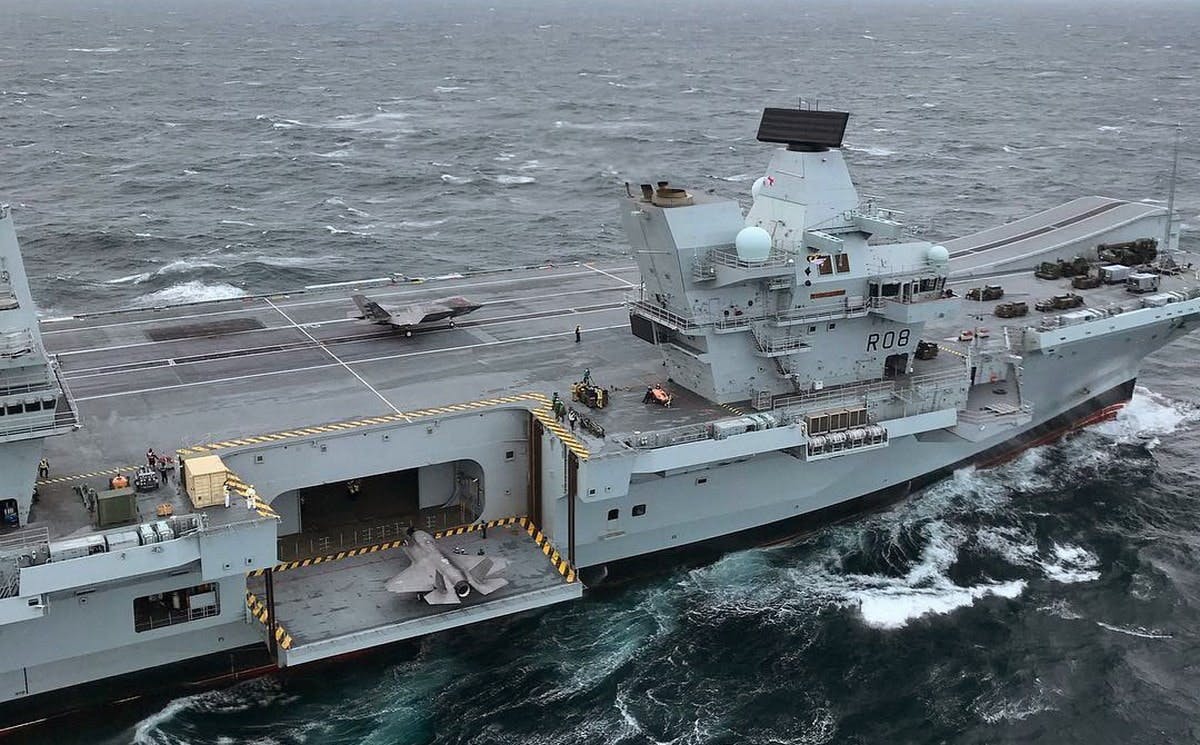
Surprisingly for their sheer scale, each ship will only have a total crew of 800, only increasing to the full complement of 1,600 when the air elements are embarked. Why are they so big? Wouldn’t several smaller carriers be more cost effective?
“The reason that we have arrived at what we have arrived at is because to do the initial strike package, that deep strike package, we have done really quite detailed calculations and we have come out with the figure of 36 joint strike fighters, and that is what has driven the size of it, and that is to be able to deliver the weight of effort that you need for these operations that we are planning in the future. That is the thing that has made us arrive at that size of deck and that size of ship, to enable that to happen.
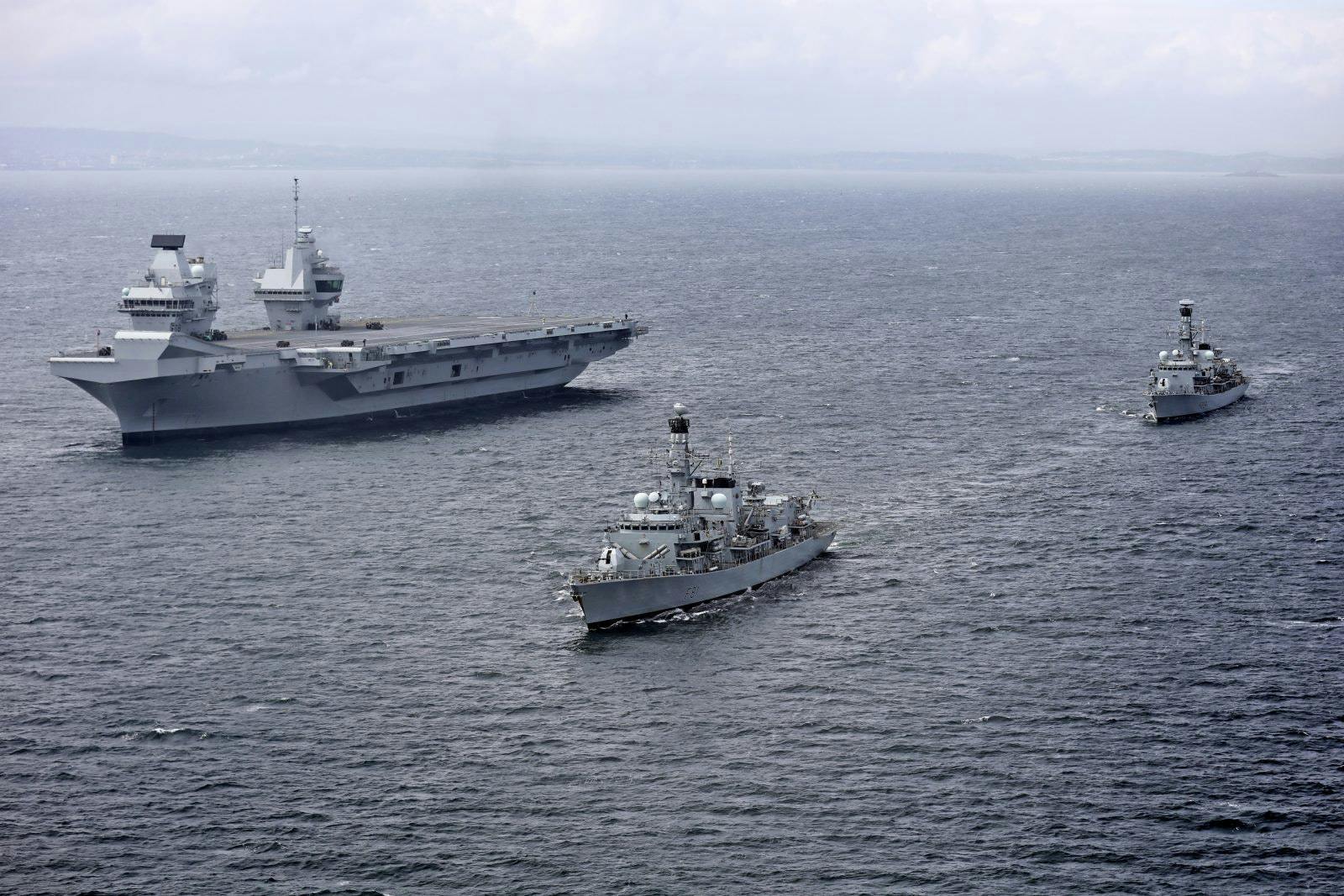
I have talked with the Chief of Naval Operations in America. He is very keen for us to get these because he sees us slotting in with his carrier groups. For example, in Afghanistan last year they had to call on the French to bail them out with their carrier. He really wants us to have these, but he wants us to have same sort of clout as one of their carriers, which is this figure at 36. He would find that very useful, and really we would mix and match with that.” — Admiral Sir Alan West, evidence to the Select Committee on Defence, 24 November 2004
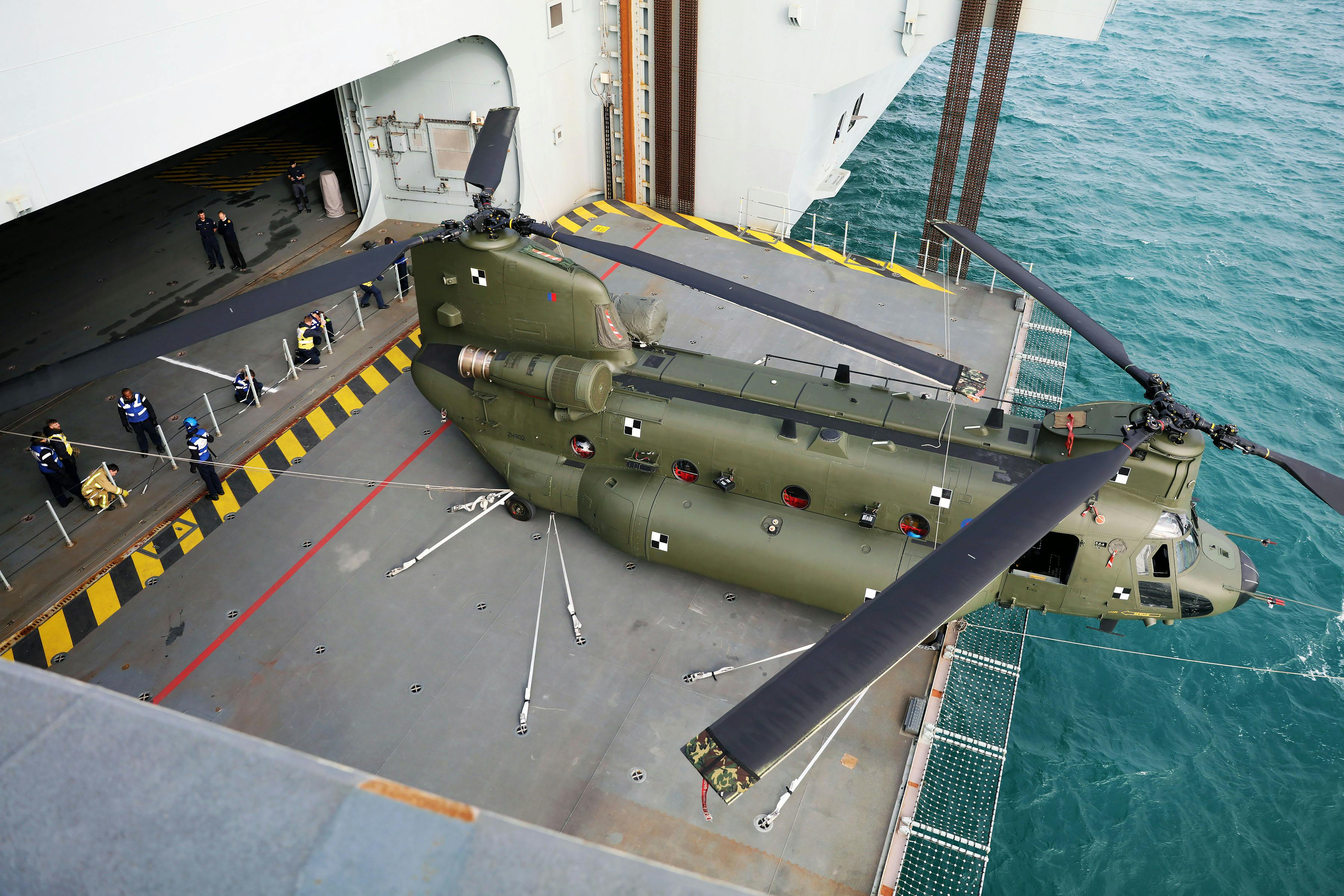
What does a large carrier offer that a smaller one doesn’t? Operational experience shows that larger carriers have significant advantages. For example, the Invincible class typically hosted around 12 Sea Harriers and with that their decks were fairly crowded. Tabloids often like to quote 12 as the maximum number of F-35B’s the new Queen Elizabeth class will be able to carry, however this is nonsense.
The term now used for the carriers embarked squadrons is ‘Carrier Air Wing’ (CVW). ‘Tailored Air Group’ (TAG) has been used in the past for tailored rotary air groups and we understand the term has fallen out of use.
The carriers, in peacetime, will usually deploy with around 12-24 F-35B
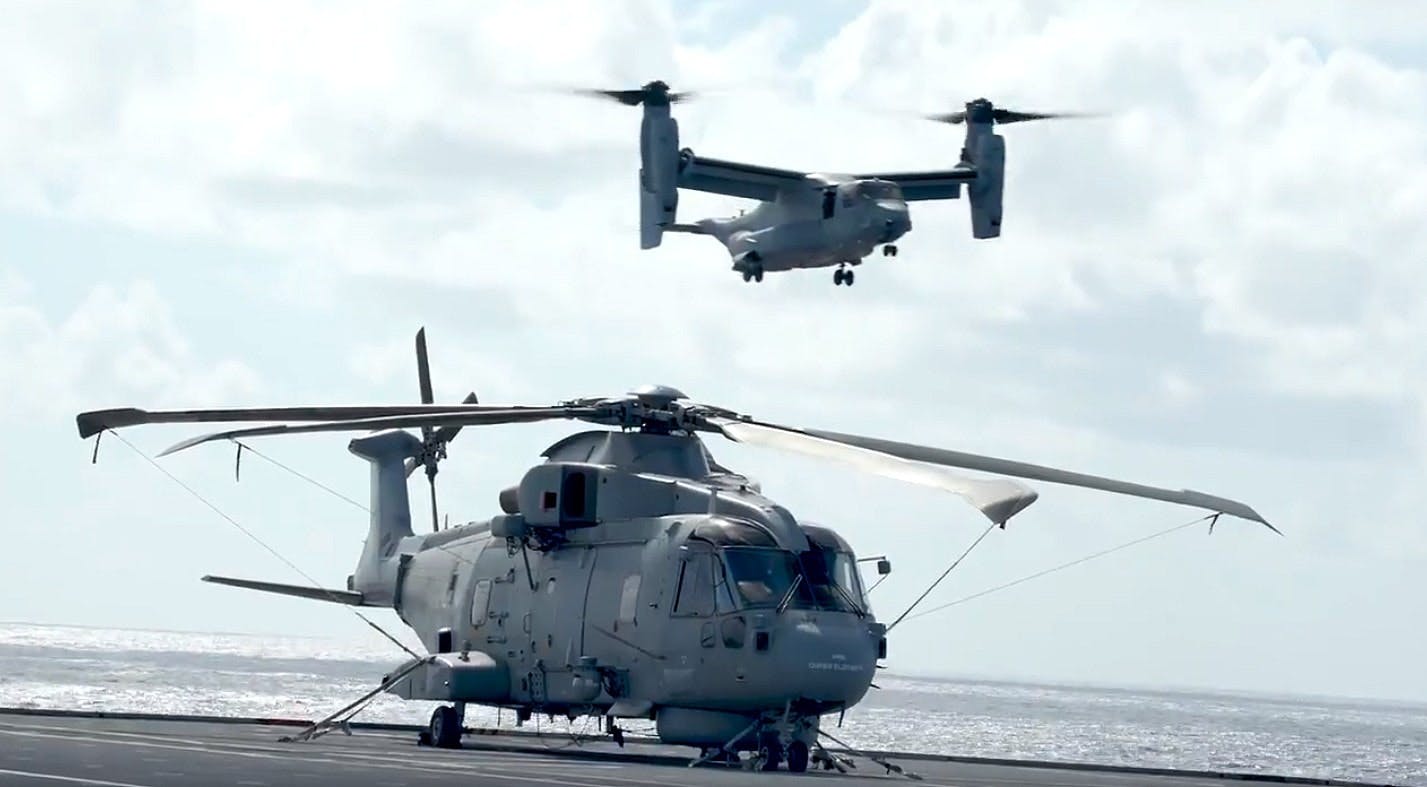
s and a number of various helicopters. The vessels are capable of deploying a variety of aircraft in large numbers, up to a maximum in the upper fifties in surge conditions.
In addition to the joint force of Royal Air Force and Royal Navy F-35Bs and their pilots, the air wing is expected to be composed of a ‘Maritime Force Protection’ package of nine anti-submarine Merlin HM2 and four or five Merlin for airborne early warning; alternatively a ‘Littoral Manoeuvre’ package could include a mix of RAF Chinooks, Army Apaches, Merlin HC4 and Wildcat HM2. The Crowsnest AEW&C aircraft will come from the embarked Mk2 Merlins.
We understand that the composition of the CVW is a balance between ship capacity and squadron availability. The two Queen Elizabeth class carriers can accommodate around twice as many aircraft as the three Invincible class.
This metric isn’t the primary advantage of a larger ship class as each F-35B is considerably larger than a Harrier and has much better performance. There’s very little reason not to build larger carriers, it was once estimated that steel accounted for only about 20 percent of the cost of the ship.
The smaller the carrier, the fewer aircraft it can support and the greater waste of resources it becomes when compared to larger carriers. The smaller the carrier, the more the vessels size restricts the performance of the aircraft onboard. The three Invincible class carriers, which the Queen Elizabeth class will replace, operated small and relatively low performance Sea Harriers. The larger F-35 that will operate from the new carriers is more effective than the Sea Harrier. It carries much more and it flies much faster and much farther. It’s also a more complicated aircraft, requiring more equipment and personnel.

A carrier accommodating as many F-35Bs as the Invincible accommodated Sea Harriers would be far larger by necessity in order to effectively operate the modern, larger aircraft.
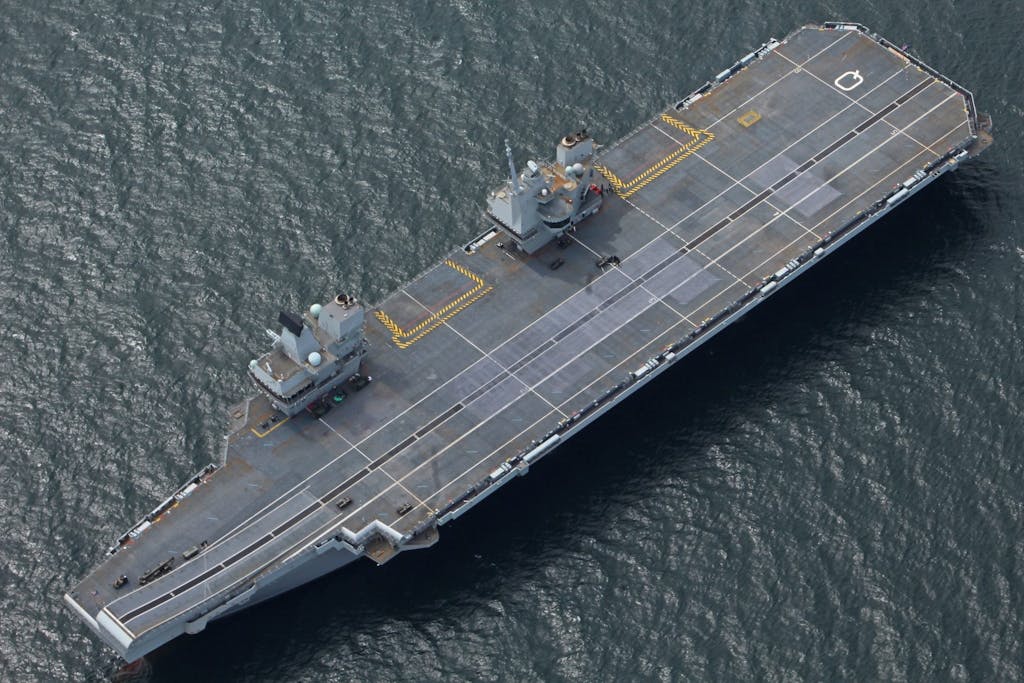
The ships former commanding officer, Captain Simon Petitt, rightfully pointed out that there is a lot of symbolism in modern warfare and that having a ship the size of HMS Queen Elizabeth, which will be the navy’s biggest ever, was significant. The sight of a heavily equipped 70,000 tonne carrier, which is almost 300 metres long, heading towards a potential enemy had a deterrent effect that is essential if the UK wants to project influence across the world Petitt claims.

“It is massively visible, you can range back in history and see the value of this. Everything from Nelson deterring Admiral Villeneuve from leaving Cadiz all the way to the big battleships of early 20th century, to what we are doing now.
The Americans use it all the time. We currently haven’t got this level of carrier capability. The bigger the capability the more influence you have to bear.”
So great is the impact of larger vessels as a deterrent, they’re often used as a geopolitical chess piece. American governments have, since the second world war, moved aircraft carriers around to demonstrate American resolve.
The particular benefits of using carriers in this way are that they operate on the high seas, where permission is not needed from other countries. Indeed, since modern US carriers are large and imposing they “show the flag” to great effect due to their sheer size alone. Equally, it is often argued that had the Royal Navy had two full sized carriers in 1982 it is more than possible that Argentina would not have attempted to take the Falklands in the first place.
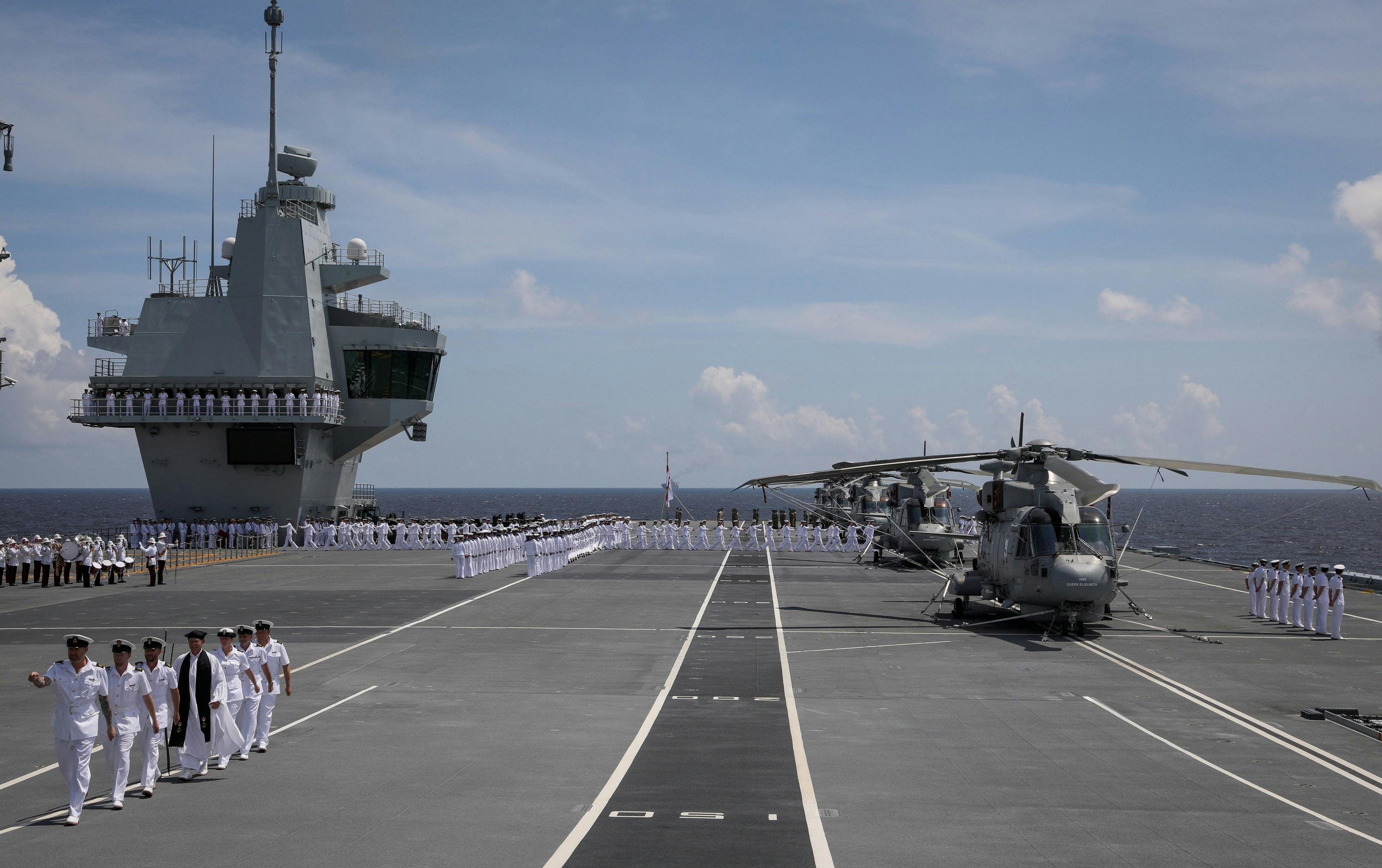

Larger carriers don’t have to be packed to bursting point with aircraft to achieve their greatest effectiveness, even with fewer aircraft on board, a ship with a large flight deck can rearm and refuel aircraft much more quickly, this is typically why they allow for much higher sortie generation rates than smaller vessels.
The more crowded the flight deck, the slower the turn-around of each aircraft, the lower the sortie generation rate.
Size also offers greater storage capacity, larger vessels do not have to be resupplied as often, impacting both the effectiveness of the carrier and her vulnerability. Because a carrier is more vulnerable when being replenished, the vessel typically withdraws from station for that function. Much of the time lost is the time spent heading away from station and returning. The smaller the carrier, the more time lost and a bigger logistics chain required in support.
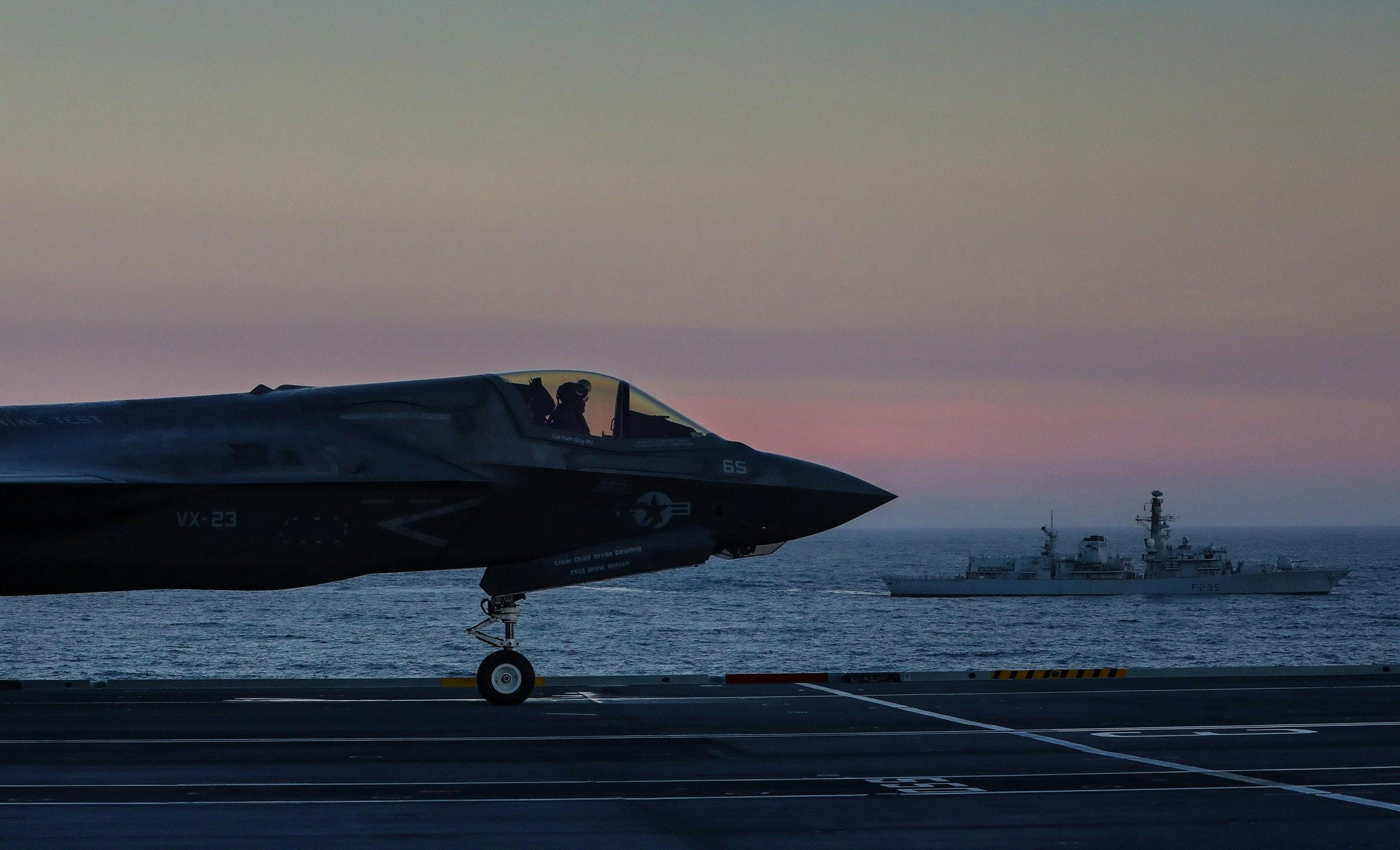
A larger ship is likely to survive damage that will sink or disable a smaller one. The smaller the proportion of a ship that gets damaged, the better the chance that the ship can survive the damage and keep on fighting. It takes sheer size to provide enough protection against all the weapons likely to be used against a carrier, from bombs to cruise missiles to torpedoes.
This lesson comes from the second world war, where lessons learned from operations with the large converted battlecruisers in comparison with the smaller purpose-built aircraft carriers had taught both the Royal and US Navies that large carriers were more survivable than smaller ones due primarily to the large number of watertight compartments.
If a complement of aircraft that would typically be found on one large carrier is split among several smaller carriers, then each vessel needs its own escorts unless they operate together. This would require more resources to operate effectively. It might be argued that splitting up a carrier force would make it more difficult for an enemy to deal with all of it at once but the price paid in escorting ships would be high, making it unfeasible for most navies. Indeed, the most significant effect this would have would be requiring more smaller carriers to do the job of one large vessel, further increasing costs. Each of the smaller carriers in the group is less survivable, more wasteful and less effective than a single larger ship.
The Queen Elizabeth class mark a change from expressing carrier power in terms of number of aircraft carried, to the number of sorties that can be generated from the deck.
The class are not the largest class of carrier in the world but they are most likely the smallest and least expensive carrier the Royal Navy could build which still have the advantages that large carriers offer.



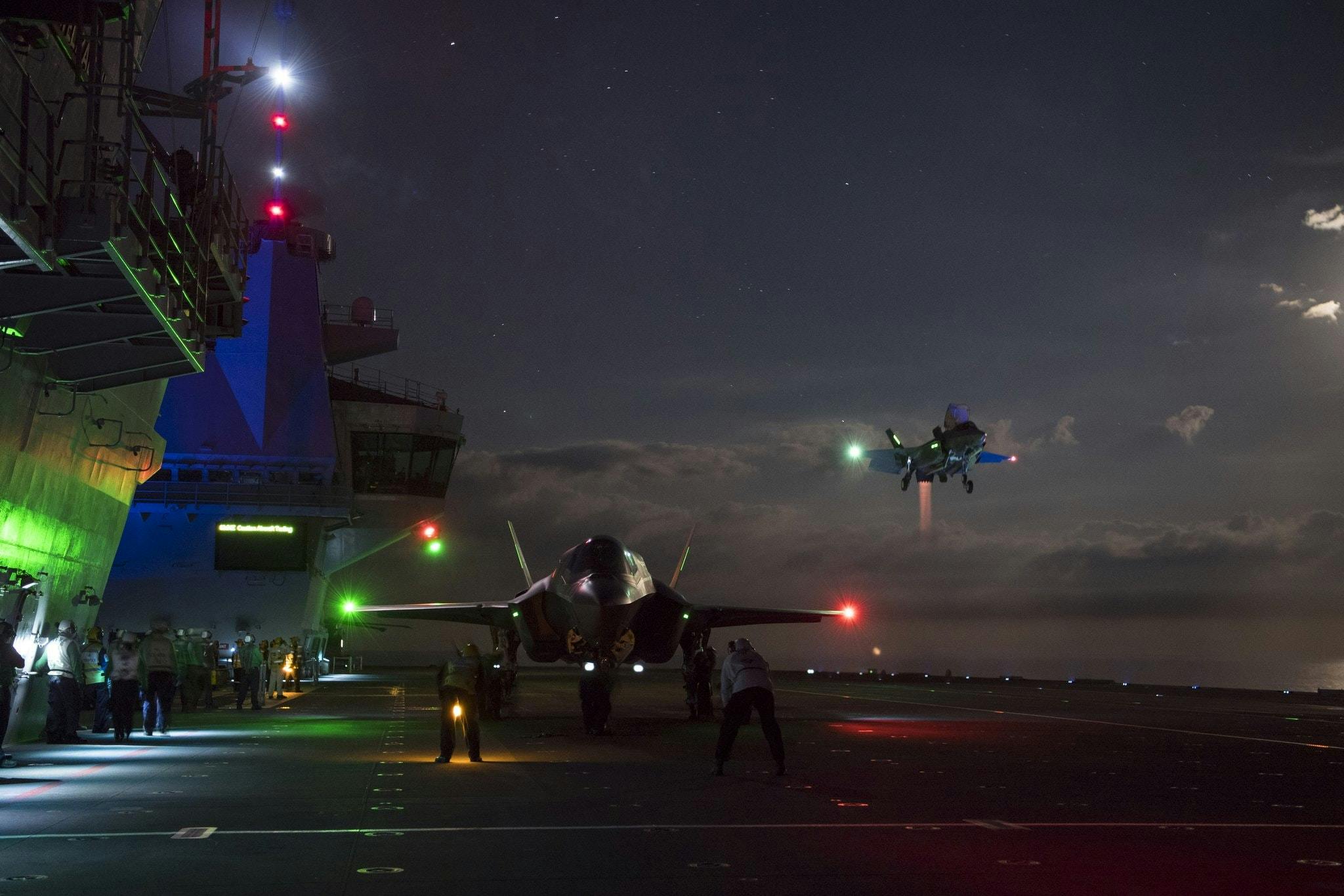
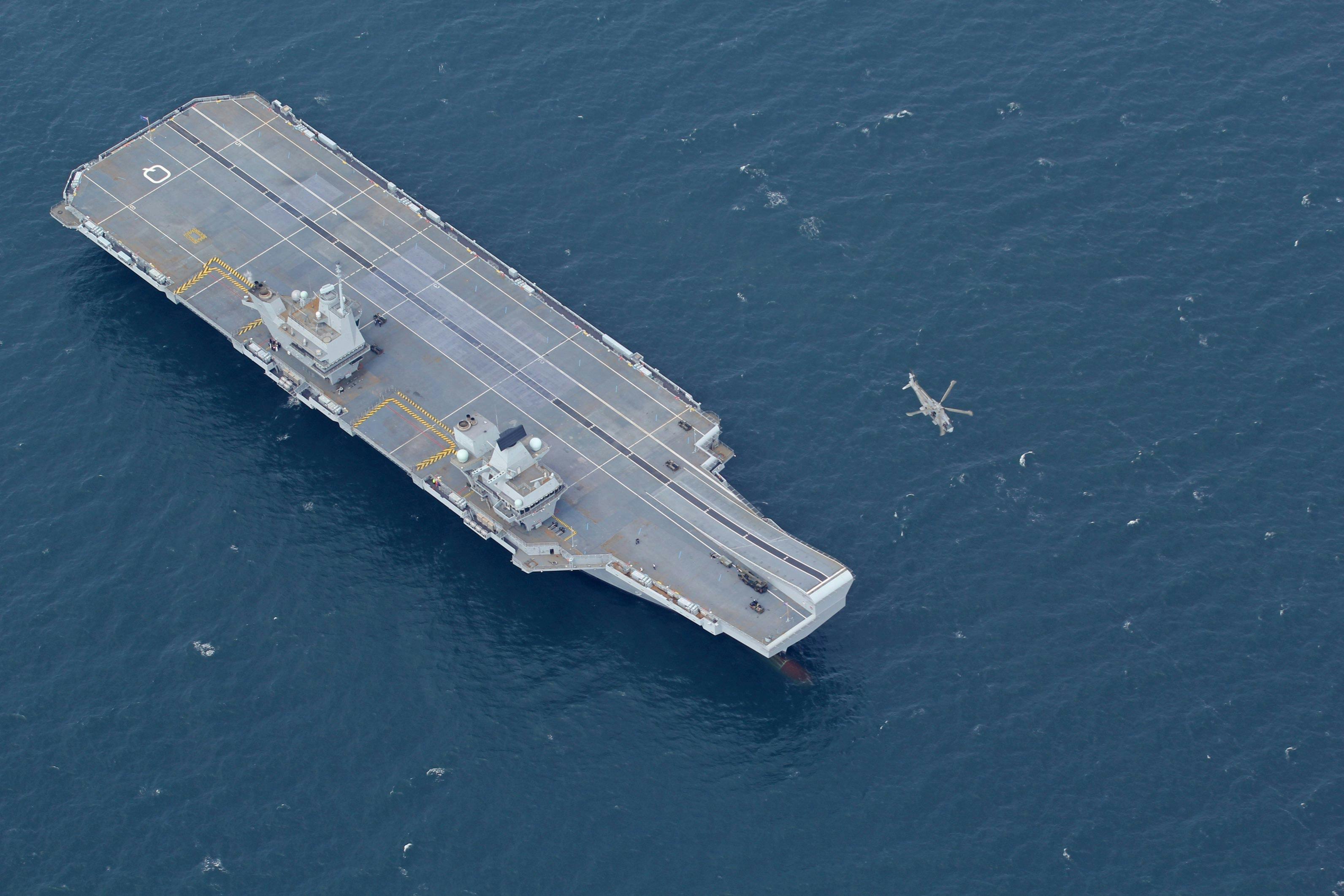


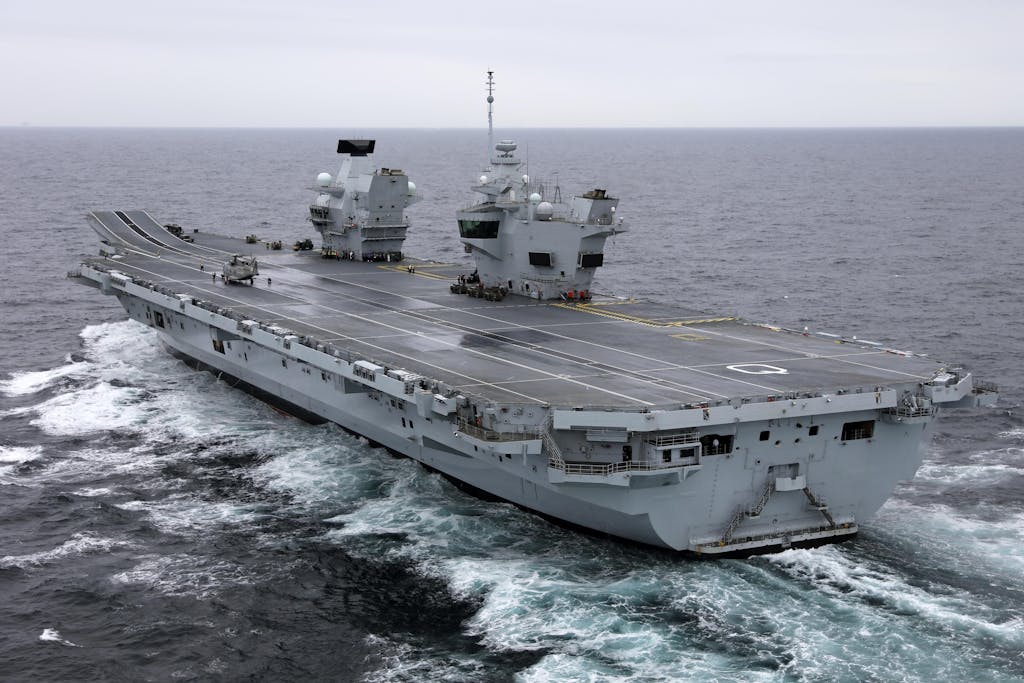











Wonder if the ski ramp could be used in conjunction with a smaller EMALS to launch different aircraft.
Only maybe if an angled deck was put in for emals i would suggest. Would affect sortie rate possibly.
Question 1 : So what would be the total number of escorts required (including those on passage to and from the area) if both carriers were in the same operational theatre simultaneously with a supporting Underway Replenshment Group in the out-field, given that each of these groups might well be operating as separate Main Bodies?
Question 2: How many operational escorts would then be available in the fleet for other duties?
In peacetime, each carrier would require 1 T45, 1 T23, 1 Astute sub & 1 replenishment ship – in wartime add another T45 & an Astute sub. Times that by 2 and you soon realise that we don’t have enough T45’s or Astute subs to be able to fulfill this requirement! Once these 2 carriers are ready, we would need another 4 T45’s, 3 Astute’s and a total of at least 18 to 20 T23/T26/T31 combination to cover current tasks on top of the carrier duties.
I know this is absolutely years ago, but…
If you look, the highest point on QE is higher that Sampson on that T45.
And the T45 is a floating SAM system, built around that high up Sampson.
Put a Sampson on QE, arm everybody with Asters and away you go.
Earlier in the development of the QE class, it was envisioned to fit both carriers with the same air warfare suite as the T45s (the same CMS, BAE Systems Sampson medium range radar, BAE Systems/thales S1850M long range radar and aster 15/30 missiles). But in a later cost cutting round, the Sampson was swapped out for artisan and the aster missiles cut
1.The chance of having both carriers operational simultaneously is very low. Refits, work up cycles and aircraft availability would severely limit the UK’s ability to surge both. If they did then it’d be very difficult to sustain for a prolonged period of time and would result in major dislocation and a significant period of readjustment afterwards.
As to the number of escorts, that’s entirely dependent on the mission and the threats the CVG will face. You’d take significantly more into a hot war than to HDRO. The CVG will scale to meet the threat and will almost certainly include coalition partners, as the US and French carriers do, under most circumstances.
2. It depends on the importance and complexity of the mission, whether there are allies available to either participate directly or step in to backfill some of the other commitments (as the RAN and RNZN did during the Falklands crisis) to release RN assets. None of this is easily quantifiable.
What concerns me about our new carriers is the fact that they rely solely on the phalanx anti shipping missile systems and that apart from their aircraft is their only defence ! We should put more weapons on them like the Russian Admiral Kosnetsov.
Except phalanx is 30mm Gatling gun and is very good. That is also what the destroyers and frigates are for, air defence and to be sacrificed if required instead of losing a carrier. Which as yet has not been done in 50 years or more
Although I agree with your premise you have ignored, or rather due to space and time, the UK requirement. The carriers are large (massive), they will be the largest warships built outside the USA except for the Japanese WW2 battleship conversion. They will however be operated differently, in a new way! The UK has been at the forefront of naval aviation from its beginning and this is a continuation of that process. An adaptable 4 acres of deployable flight deck they will be able to deploy a range of UK assets and allied inventory. If required they can operate independently in protection of overseas territories and sea lines of trade. What should not be ignored is air wing development, FAA/RAF/Army and how they will operate from the QE class. The QE class has the potential to deliver a level of capability previously only available to the United States, be it innovative but yet to be proven. I remain a supporter of the project!
?????????
Looks a fine ship, and sorely needed, but relying on the F35B was a stunning mistake. Even if you ignore the worst of the aircrafts performance issues as exaggerations, there’s no denying it’s a mess now. I dread to think what it’ll be like 20 years from now and there are no new aircraft of this type planned, or even likely to be.
Prince of Wales should be converted now. Horrible cost no doubt, but cheaper in the long run for sure.
Additionally, if the F-35 ever comes across a PAK-FA, it will be mincemeat. (See Australian defence analysis). Best we start buying Sukhoi now.
I think the pak fa is a failing project with money issues at the moment but even so the f35 can handle itself yes it has had its issues but can take on a just like that or another fight can. Also the f35 will most likely have a replacement manned fighter after some point.
Jams, you mean “Australian air power” – a site run by Carlo Kropp
which is in no way shape or form connected to the Australian Defence force..
Spoken like a true expert Jams O’Donnell!!!!
I just love people that know everything, but actually know nothing other than hanging onto the little sound bites created by other non-entities.
The TSR2 should never have been cancelled.
Isn’t the real reason they are so big is that they were originally conceived a catapult carriers. Then they were downgraded to F35 carriers. When the Conservative government was elected in 2010 they investigated turning them back to catapult carriers and it would have cost a fortune to strengthen them so now we have large carriers with VTOL aircraft.
No, the article outlines the reasons.
You know BAE systems made over £1 billion redesigning the carriers to remove the catapult systems, when the design comes uk’s have left the in minus the actual systems. BAE are ripping the govt off at every opportunity they can with every single project they complete, late, over budget and needing fixing. It’s about time these contracts were fixed price.
Why would the RAF want F35B’s? (Apart from being able to operate from the carriers). B’s would have a built-in handicap and very little benefit to the RAF.
Harriers weren’t specifically designed for aircraft carriers. The idea behind them was that they could operate in fields/open spaces once the Soviet Union had destroyed European airfields. That was the reason for the RAF purchasing harriers in the past and maybe the same reason now.
For the same reason that the RAF had Harriers before. STOVL aircraft offer the ability to operate fast jets from places which otherwise could only support helicopters. All these fast jets that require massive runways to operate can be wiped out simply by targetting their well known & unmovable air bases. If they can’t take off or land, then they quickly become of no use.
I have read the article and all the comments and understand why this (it seems nowadays rather typically British) procurement mess has occurred, but even if the F35B turns out to be not the complete dud that increasing amounts of evidence suggest it is, is this QEC/F35B combo actually what the UK needs over the next 1/4 century? Not being nuke, the QEs don’t have a global range so will require vulnerable fleet oilers along with them if they’re required to operate any further away than the Canary Islands. Then when they get within range of their target, they have only a very limited strike capability. Most of this aircraft is taken up with its STOVL gubbins, leaving very little room for ordnance (or fuel for that matter). Should the Navy and MOD be thinking seriously about a navalised Tornado that, with its swing wings could conceivably get off and on without a catapult? I know this sounds far-fetched but it seems to me that we are just playing at the ‘Big league’ Navy game with this package and we might as well not bother.
Even nuclear carriers need replenishment of aviation fuel, ammunition and, most importantly, food.
David
I agree with you but what Geoffrey Cooper forgets is the fact that all the escort ships need replenishing as well not only the carrier
Yes, the nuclear advantage isn’t really one of range, although they do require less replenishment. It’s also one of electrical capacity and in the case of everything pre Ford class, the steam generated is harnessed to drive the catapults. As the QE class were never going to be nuclear, if they did have catapults fitted they would have had to be EMALS, I think EMALS being an immature technology with increasing development costs is one of the reasons it become cost prohibitive to fit them.
Nuclear means you have more bunker space for Aviation fuel.
However you still need to RAS food , stores and ammo.
Your escorts also still need to RAS.
Nuclear also means hugely expensive and long refits to refuel the reactors. A conventional carrier refit can be done a lot easier and cheaper which reduces the through life support costs.
[…] the aircraft for carrier duty works out to a measly 12 per ship, prima facie. As a matter of fact, various media outlets have reported that the carrier will routinely deploy with only a dozen of the aircraft. However, […]
“The sight of a heavily equipped 70,000 tonne carrier, which is almost 300 metres long, heading towards a potential enemy had a deterrent effect that is essential if the UK wants to project influence across the world Petitt claims.” “It is massively visible, you can range back in history and see the value of this”
well, i believe history shows the deterrent effect of large warships to be less than perfect..
See the interwar Singapore Strategy and resulting Force Z disaster in 1941
The last thing that the Royal Navy needs are nuclear powered carriers, they are both dangerous and very expensive. Apart from their cost we have to understood the big myths that surround nuclear powered carriers Firstly nuke carriers are cheaper to run and easier to use as they do not need tanker support vessels. Wrong! they defiantly always require tankers and other support vessels for, amongst other things, fuel for their task force’s escorts, fuel for the nuke’s aircraft, replenishing the nuke’s and the escort’s food, ammunition, spares, etc. etc. Tanker support is absolutely essential to nuke carriers. Secondly, the myth that nuke carriers are so well defended that they cannot be sunk or suffer battle damage. Wrong! In the early days of nuke carriers there may been some truth in the invincibleness of nuke carriers. However time and technology moves on, they are now quite vulnerable particularly in respect to the latest anti-ship missile systems and torpedos, like the UK’s new Spearfish torpedos if fired from the latest ultra quiet non-nuclear AIP (Air Independent Propulsion)submarines. The consequence of such an attack if the nuke carrier’s reactors were damaged and it did not sink could well be creating a floating Chernobyl disaster. If you find this difficult believe I suggest you remember the Titanic. Common sense calls for non-nuclear carriers every time, especially when the huge cost savings are factored in.
Regarding the displacement of both carriers. Judging by this article, can we now say that they are 70,000 +
Iam
We need them bigger because we need to show we are still a force to be recond with a proper global power
And we are when everything is taken into consideration… There is only one true Military Super Power now and that is the USA. But second in that list for Soft Power, is the UK..
.Fact.
Any country with nuclear weapons is a superpower in military terms
I know… But we can project Soft Power globally, far better than others.
They are big but the previous ones were particularly small
because they weren’t meant to be carriers, the three Invincible Class were designed and built as Anti-Submarine Through Deck Cruisers, carrying anti submarine helicopters, they were modified to carry Sea Harriers when the Government realised the Navies shortcomings following retirement of our real Carrier!
Yes I know. I but everyone was bemoaning the loss of our carriers when in fact they weren’t designed as such but only supposed to operate in the north Atlantic to look for Russian submarines. But the public perception of what a carrier needs to be, after all we won back the Falklands with one….etc etc
Don’t think we should be having our ships added to the American chess game to move around, if they need more carriers let their people’s tax pay for it sure we can find work for our own ships
They won’t be added to the ‘American Chess game’ – what makes you think that?
reading the article our Admiral had apparently made the case for the carriers by saying the American carrier Admiral could wanted us to have them, they wanted them to be a certain size with a certain capability so they can make use of them. Making reference to a time they had to use a French carrier to plug a whole in their lines. Just taken from the posted article
pasted from article
I have talked with the Chief of Naval Operations in America. He is very keen for us to get these because he sees us slotting in with his carrier groups. For example, in Afghanistan last year they had to call on the French to bail them out with their carrier. He really wants us to have these, but he wants us to have same sort of clout as one of their carriers, which is this figure at 36. He would find that very useful, and really we would mix and match with that.”
— Admiral Sir Alan West, evidence to the Select Committee on Defence, 24 November 2004
noting the parts of, he see us slotting into his carrier groups, he really wants us to have these, he would find that very useful
It’s so you can carry more tins of Fosters.
Big ? They’re not big ! Have you seen the American carriers.
Yeah I have John Brown, but clearly you haven’t!!!
The American carriers are longer, created by the fact they have a very long and elegant bow, but in other physical dimensions, there’s nothing in it!!
Because they’re the Queen Elizabeth class carriers…
Witty.
simply what the rn should have had before the ark royal was scrapped in the late 70s
Yes indeed!
The right size for 36+ and other support craft.
Because steel is cheap!
We also need to to support the yanks new crappy carrier that keeps breaking down he he he.
Why is the Gerald R. Ford Class so big?
And the point of that is?
I remember you Jonathan, you often went out of your way to remind people that the US is a superpower, tell us, are you that insecure in your own achievements that you go out of your way to post this kind of thing?
Lets talk emals and recovery systems!!! Hows that going ?
because Americans have short dicks!
EMALS, twin nuclear reactors, enormous hangar, 4200 crew. The list goes on…
3 EQ class carriers per 1 GF carrier
Because the Americans want them that big…Were’s it getting built at?
No and Rosyth.
Oliver Miles, interesting read
They’re big because they’re designed for RAF – has to have hotel like stuff
Currently there are only plans for two operational Squadrons of F-35B s with 809 NAS becoming operational in 2025 617 Sqdn will not declare Maritime IOC until 2020 so the capability gap remains – a calculated political gamble with the UKs security and our ability to defend the UK s sea lanes. The government needs to act and deliver the 36 aircraft capability do not forget that when you talk about fleet size you have to remember nos need to reflect maintenance commitment as the aircraft are rotated through maintenance and the need for an operational training fleet Act now order more ac and put the control of the aircraft with the Maritime Commanders The TAG came about as there where not enough aircraft to go round as all the Harriers where being utilised to support training and deployment on Herrick
The operational F-35 will have capability way beyond that of the Harrier but the Navy needs the aircraft on the decks of the big deck carriers do not let the politicians or the RAF tell a different story as enough aircraft have not been ordered
DUMBEST. HEADLINE. EVER!
Hi, given the article answers one of the most commonly asked questions about the vessel by explaining why the ships are the size they are, how is it “dumb”?
I love the size of them. Shows real power!
They aren’t big at all.. Comparing to US ones..
They’re only a bit smaller than the American carriers, not much difference at all.
I won’t say a “bit” mate
But she’s impressive
It has too.the name queen Elizabeth was used,so it should be grand and pride. as to it’s name.I wish we had like them in my country.
They are not that big if you compare them to US navy super carriers but they are a lot bigger compared to other carriers in service today(except US). Still, they are so big.
They aren’t much smaller than the U.S carriers, not much difference at all.
They’re 186ft. shorter, and, 128ft. narrower than a Gerald Ford Class ship, and, more importantly, over 10 kts. slower.
We got two of them for the cost of a single Ford class. They will be slower and smaller but crucially they can do what the UK requires of them and at a price point that allows us to buy a pretty robust and credible capability.
The Q.E. Class are two ships in one platform ….They are both a L.P.H. and a fleet carrier , hence the size …
Sj Ahmad Shoaib Saud Akmal Goraya Abubakar Mujtaba
one torpedo….its all it takes.
Well..that was proved in WW2 but even some carriers survived torps and Kamikaze (and read about the old WW2 Illustrious. Her flight deck bore the dents from Kamis until the day she was scraped. and she had a twist in her hull from near bomb misses in the Med. I can remember 11 carriers when I joined the RN
OOPS! scraped = scrapped
We should have built a total of four carriers. Anyone with a modicum of sense would know that the demands of today would have at least three of them in full time employment, that would leave one for refit. Then there are the escorts. Despite all the reassurances by the Govt and MOD, the RN doesn’t have enough warships for the present demands, never mind escort work. All those patrol vessels that the Govt is pushing the navy to build are not fit for purpose as escorts for the carriers. So the main question is:- Where are all the escorts coming from?
If you want the extra tax bill, then yeeeah let’s have six! Bloody ridiculous comment unless we stop paying for the NHS, schools etc.
Foreign Aid could buy 4 more carriers….. EVERY YEAR!!!… that’s where the money to properly fund defence should come from. Need I say anymore??
It’s a version of Godwin’s Law. As soon as someone says “why can’t we have this?” there’s always someone who will insist it means we’ll have to throw sick people into the streets and close schools.
Take a look at the budgets for foreign aid, EU membership (net difference) and the housing benefit bill inflated by a previous government hell bent on building a country that would supposedly get richer by buying and selling each other’s houses. We could build more Darings, Astutes and even Queen Elizabeths plus more hospitals and schools, and still have change left over so we could stop taxing the nation more in the first place.
I’d really like to see us with a fixed-wing AEW capability, that should have been one of the lessons learned from the Falklands.
The first lesson that should have been learnt from Falklands was we barely had enough ships to do the job. So why do we have half the ships we had back then and keep using RFA’s to cover the holes in the seat of our pants??
Yes. A few E2-D’s would prove to be a huge force multiplier
The MoD doesn’t learn lessons. If it did, for a start it would mean a lot fewer cushy postings for military officers in that big white stone building on Whitehall, and therefore no more free London flats near “the club” or two pensions.
An article that has been overtaken by time and events. The second QE carrier Prince of Wales that the Labour Govt agreed to couldn’t be cancelled because the BAE penalties would be greater than having the damned thing. Now MOD say once it is finished we will be spending another huge sum to convert it to a helicopter carrier.
I am sitting back waiting to hear that these carriers have propulsion problems just like almost all class of ship that has been built over the past 15 years.
Britain has lost the way, but with the stories coming out of the US it sounds like their policy of build no matter what is coming home to roost as their ships keep failing and have to thumb a lift.
NO ANGLED FLIGHT DECK NO CATAPULT HOW CAN OTHER COUNTRIES LAND ON AND TAKE OFF IN A EMERGENCY, BETTER START MAKING A UP GRADED SEA VIXAN,
The US Marines, Italians, Spanish and possibly the Turks soon can use a STOVL carrier with no problems whatsoever. That only leaves the French and US Navies. If necessary you could conduct a barrier landing with a CATOBAR aircraft in a dire emergency on a QEC.
I heard that it’s actually turned out shorter than originally planned and if it had been the original length typhoons could have operated from it.
You heard wrong, very wrong.
Would have probably cost more to convert the Typhoon for naval use than it did to build the QE.
Beautiful ship and great testament to UK engineering: 10,000 mile range; up to 36 stealth F-35B’s each with comparable strike range to F-18F or naval Rafale. Integral AEW out to 200 miles.
Will sail with the world’s best AAW destroyer, the world’s best ASW package and a brand new replenishment vessel. Looks like a plan coming together to me.
Nice to read a positive comment for once!
Really depressing to read the mostly ignorant comments. I assume a sprinkling of local village idiots and Putin-bots. But still.
By the way, when will 36 F-35B’s i.e. 3 squadrons, be available as that’s the supposed design point?
I think by 2030. The RN and uk armed forces might be in a good position but they need to get numbers of escort warships and subs sorted out
26 frigates/ destroyers is the minimum and 10 SSNs. Also need more than 48 F35Bs available for carrier deployments, ideally 96!
if we can resolve those issues then yes the UK will be back as a world class military power again.
I don’t believe a word of this 36 aircraft story. The ship is 300mm narrower than the lock gates in Rosyth. It’s as if the then Prime Minister Gordon Brown (Scottish) and the then Defence Minister Des Browne (Scottish) said as big as you can as long as it’s built in Scotland.
If the French can bail out the Americans with their 40t ton carrier then 40t tons would have done for us. We wouldn’t have needed to dredge Portsmouth harbour quite as much, and the wetted part of the hull would just be a stretched version of the new Tide class tankers so QE wouldn’t be 100% a prototype. Also 24 F35Cs on a CATOBAR deck would be a very powerful asset and remember the 37t ton tanker that is always going to be alongside could easily have had a double pad and hargar for 8 Merlins if it had been designed with such. Add on 2 SSNs and 4 escorts with 8 Wildcats and that is a properly good force.
The whole story of why it is as large as it is is, is clearly an after the event made up story and we will never know the real truth, i suspect its down to the realistic fear that if we went smaller and one got cut, we wouldn’t be able to operate them in a real war situation (Falklands we needed both decks).
However, whatever reason we ended up with what we ended up, we still have a very capable carrier. There are still a number of unanswered questions, such as f35b numbers and how we are going to have enough escorts / helicopters to defend them, but its all looking pretty positive.
Additionally whilst it would have been better to have cat/trap, we are not completely useless to our allies, since a number of them are buying the B versions, so we can cross deck with them.
I am puzzled why it is so large yet will carry a smaller number of aircraft than earlier carriers… Aircraft and Heli size precluding more?
I was wondering… will these 2 ships be able to land and launch the US Marine and Air Force V-22 Osprey tilt-rotor planes?
So selling 72 Harriers, that had just been upgraded to Near Mark 10 status, to the United States Marine Corps.
(One general saying, “it was the bargain of the century, that would keep their AV8 Harriers flying well into 2025”) Was a great move ?
Couple this to the fact that we will be paying approximately £13 Billion for “138” F35C’s, to replace probably one of the best aircraft we ever created and built.
(The obsession with wanting afterburner and 500 mph more straight line speed, at the expense of manoeuvrability with a tried and trusted VTOL platform) ?
Now the ships, I take take it we acknowledge that 3 ships have been decommissioned, cannibalised and mothballed, which only recently had £900 Million refits each was a wise decision?
These have been replaced with £7 Billion worth of new builds that’s widely acknowledged being vulnerable to new advanced enemy missile technology!
Basically these were figures and stats of a knee jerk reaction calculated on the back of a packet of B&H during a fumbled recession in 2008 ? Costing us hundreds of billions more in grey sky thinking.
What happened about ICALS….could have had cats&traps at a fraction of the cost of EMALS…..small, efficient & affordable…
[…] en el reino unido. El HMS Prince of Wales y su barco gemelo, el HMS Queen Elizabeth, son los más grande y más poderoso de la superficie de los buques de guerra jamás construido para la Royal […]
[…] carriers built in the UK. HMS Prince of Wales and its sister ship, the HMS Queen Elizabeth, are the largest and most powerful surface warships ever built for the Royal […]